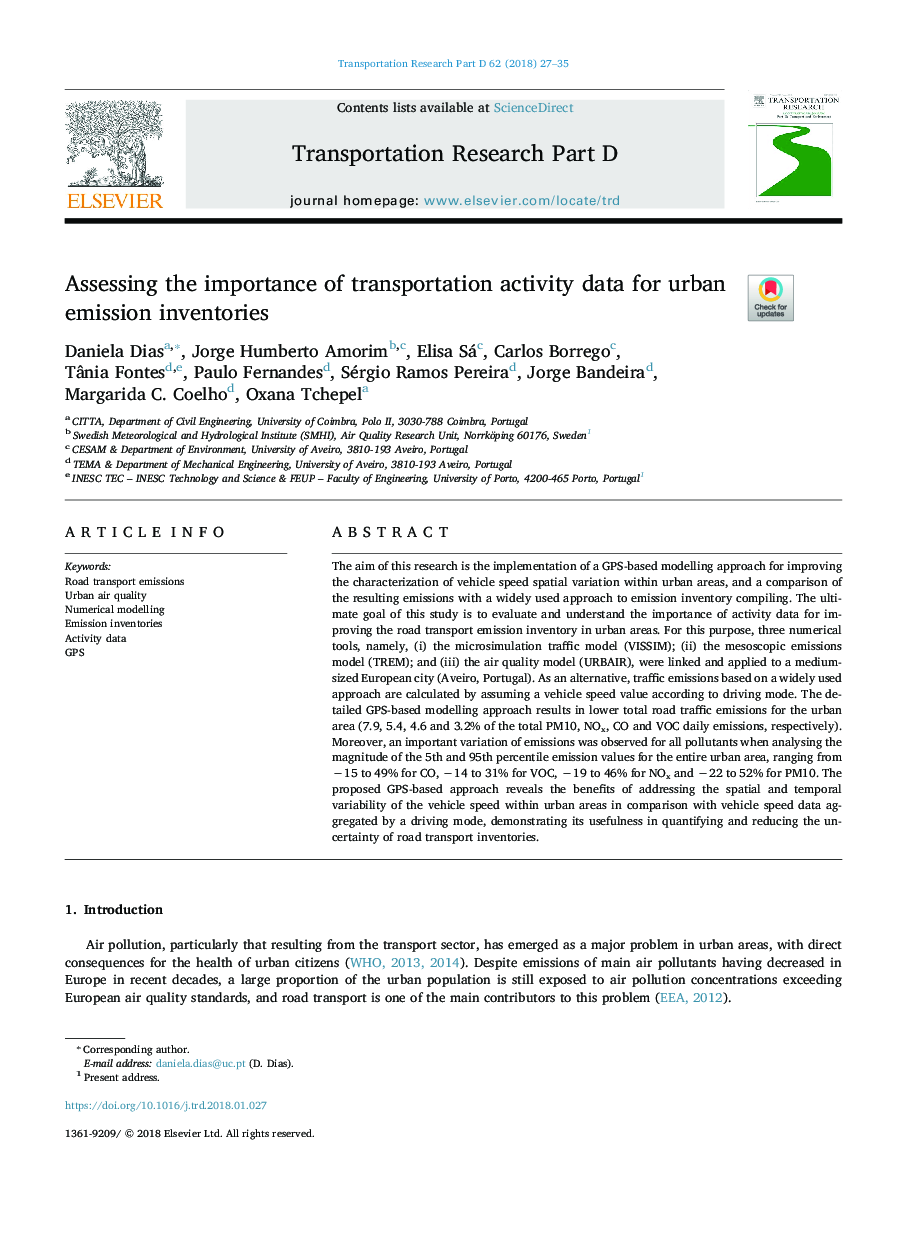| Article ID | Journal | Published Year | Pages | File Type |
|---|---|---|---|---|
| 7498668 | Transportation Research Part D: Transport and Environment | 2018 | 9 Pages |
Abstract
The aim of this research is the implementation of a GPS-based modelling approach for improving the characterization of vehicle speed spatial variation within urban areas, and a comparison of the resulting emissions with a widely used approach to emission inventory compiling. The ultimate goal of this study is to evaluate and understand the importance of activity data for improving the road transport emission inventory in urban areas. For this purpose, three numerical tools, namely, (i) the microsimulation traffic model (VISSIM); (ii) the mesoscopic emissions model (TREM); and (iii) the air quality model (URBAIR), were linked and applied to a medium-sized European city (Aveiro, Portugal). As an alternative, traffic emissions based on a widely used approach are calculated by assuming a vehicle speed value according to driving mode. The detailed GPS-based modelling approach results in lower total road traffic emissions for the urban area (7.9, 5.4, 4.6 and 3.2% of the total PM10, NOx, CO and VOC daily emissions, respectively). Moreover, an important variation of emissions was observed for all pollutants when analysing the magnitude of the 5th and 95th percentile emission values for the entire urban area, ranging from â15 to 49% for CO, â14 to 31% for VOC, â19 to 46% for NOx and â22 to 52% for PM10. The proposed GPS-based approach reveals the benefits of addressing the spatial and temporal variability of the vehicle speed within urban areas in comparison with vehicle speed data aggregated by a driving mode, demonstrating its usefulness in quantifying and reducing the uncertainty of road transport inventories.
Keywords
Related Topics
Life Sciences
Environmental Science
Environmental Science (General)
Authors
Daniela Dias, Jorge Humberto Amorim, Elisa Sá, Carlos Borrego, Tânia Fontes, Paulo Fernandes, Sérgio Ramos Pereira, Jorge Bandeira, Margarida C. Coelho, Oxana Tchepel,
